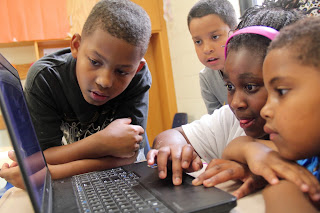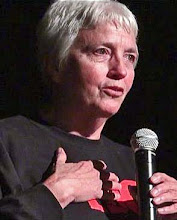 Peer into the face of any of America’s 2.5 million+ homeless children. What could you do to ease their suffering? A toy for Christmas does not assuage their basic human need of housing, but that seems to be all they’re likely to get, and even less from our perpetually politically-hamstrung, priority-challenged Congress.
Peer into the face of any of America’s 2.5 million+ homeless children. What could you do to ease their suffering? A toy for Christmas does not assuage their basic human need of housing, but that seems to be all they’re likely to get, and even less from our perpetually politically-hamstrung, priority-challenged Congress.
Let’s stop pretending that homeless kids count. They don’t.
HUD (U.S. Department of Housing and Urban Development) continues to deny their existence, saying that families and youth who’ve lost housing and rely on a patchwork quilt of nightly accommodations—insecurely doubling up with a succession of friends, families and acquaintances; bouncing in and out of cut-rate motels—are not “really homeless." The only “benefit” of this declaration is to keep the homeless numbers down and avoid addressing the surging increase in families, youth and adults without a place to call home.
An effort to expand the definition of homelessness to bring HUD’s definition in line with the Department of Education’s definition, one that reflects reality, is still being pondered by Congress. HUD’s annual Annual Homelessness Assessment Report (AHAR), indicates a slight decrease in homelessness, based on their “Point In Time” (PIT) count, a process criticized by homeless children/youth advocates. “The obvious discrepancy between the AHAR numbers and what any provider, public school employee, or American who regularly walks down a city street can see with their own eyes, calls into question the need for the AHAR and indeed, the purpose of the PIT counts,” stated Ruth White, executive director of National Center for Housing and Child Welfare, in a recent press release criticizing HUD’s PIT and AHAR.
Surprisingly, the Every Student Succeeds Act of 2015 recently made it through Congress and was just signed by President Obama. The new law includes a sliver of language addressing the issue of education for homeless students, finally reauthorizing the McKinney-Vento Homeless Education Act, last addressed in 2001. Unfortunately, this legislation includes a recommendation for a paltry amount of funding, $71.5 million, resulting in what my educator-friend points out boils down to an “unfunded mandate.” I can hardly argue.
In the 10 years I’ve been traveling backroads of America to chronicle the plight and promise of homeless children and youth under my nonprofit banner “HEAR US,” the number of homeless students identified by schools has more than doubled, from 600,000 to the current 1,360,747. During that time, funding to help schools cope with this growing population has languished, to say the least. Current funding is a mere $65 million, “up” from $62 million in 2006, reaching about 10% of districts. Money is used to provide supplies, tutors, and transportation as well as pay for staff on the state and local level to coordinate services for homeless students. So much for “homeless kids count.”
Education alone will not alleviate homelessness among families and youth, though without it they’ll have no chance to get ahead. Mostly ignored by mainstream media, accounts of homeless students breaking the chains of poverty merit sporadic coverage, highlighting their hard work and luck, but sadly diverting attention from the millions experiencing daunting struggles with poverty, gut-rumbling hunger, immobilizing trauma, debilitating physical and mental health issues (kids and their parents), and numbing insecurity, the result of not knowing where to sleep at night.
One family I’ve met in my travels, a mother of 2 girls forced to ask her ex-husband to care for their daughter until she finds a secure place to live, illustrates the devastation of homelessness. The mom has continued to try to work, providing in-home health care in return for lodging for her and her youngest daughter. In the process she’s endured grueling abuse from her hosts. Imagine the worst.
The mother is traumatized, immobilized. She struggles to make productive decisions for her and her daughter, but she’s not able to because the help they need doesn’t exist. Her college degree and rusty work ethic will hardly provide the escape from this “non-homeless” homelessness. No jobs, much less those paying a living wage. No shelters. No affordable housing. No transportation. No counseling. No health care.
So looking her 8-year-old daughter in the eyes, all I can do is offer an inadequate “Merry Christmas” and a stuffed animal. I painfully know it is not enough.































